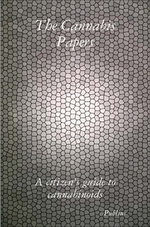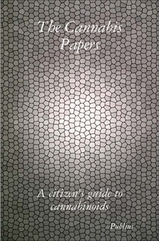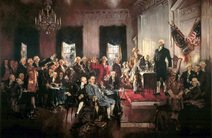By Publius
This roundup links to seven 2014 PubMed articles on cannabinoids modulating other systems in our bodies, such as: the olfactory, endocrine, vanilloid, serotonin, opioid, dopamine, and nervous systems. There’s also a bit of systemic science ~ getting a good night’s sleep.
I. Olfactory System and CS
“Thus, CB1 receptor-dependent control of cortical feedback projections in olfactory circuits couples internal states to perception and behavior.”
The endocannabinoid system controls food intake via olfactory processes.
Soria-Gómez E, Bellocchio L, Reguero L, Lepousez G, Martin C, Bendahmane M, Ruehle S, Remmers F, Desprez T, Matias I,
Wiesner T, Cannich A, Nissant A, Wadleigh A, Pape HC, Chiarlone AP, Quarta C, Verrier D, Vincent P, Massa F, Lutz B,
Guzmán M, Gurden H, Ferreira G, Lledo PM, Grandes P, Marsicano G.
Nat Neurosci. 2014 Mar;17(3):407-15. doi: 10.1038/nn.3647. Epub 2014 Feb 9.
PMID: 24509429 [PubMed - in process]
II. Endocrine System (Hypothalamus-pituitary axis) and CS
“Whereas the effect on 3β-HSD was counteracted by SR141716A (Rimonabant) - a selective antagonist of CB1, thus indicating a CB1 dependent modulation - the effect on cyp17 was not, suggesting a possible involvement of receptors other than CB1, probably the type-1 vanilloid receptor (TRPV1), since AEA works as an endocannabinoid and an endovanilloid as well.”
Hypothalamus-pituitary axis: an obligatory target for endocannabinoids to inhibit steroidogenesis in frog testis.
Chianese R, Ciaramella V, Fasano S, Pierantoni R, Meccariello R.
Gen Comp Endocrinol. 2014 Feb 21. pii: S0016-6480(14)00053-7. doi: 10.1016/j.ygcen.2014.02.010. [Epub ahead of print]
PMID: 24566122 [PubMed - as supplied by publisher]
III. Vanilloid System (Schizophrenia) and CS
“Our results indicate that the schizophrenia-like behaviors displayed by SHR [Spontaneously Hypertensive Rats] are differently altered by cannabinoid and vanilloid drugs when compared to control animals and suggest the endocannabinoid and the vanilloid systems as a potential target for the treatment of schizophrenia.”
Effects of cannabinoid and vanilloid drugs on positive and negative-like symptoms on an animal model of schizophrenia: The SHR strain.
Almeida V, Peres FF, Levin R, Suiama MA, Calzavara MB, Zuardi AW, Hallak JE, Crippa JA, Abílio VC.
Schizophr Res. 2014 Feb 17. pii: S0920-9964(14)00062-0. doi: 10.1016/j.schres.2014.01.039. [Epub ahead of print]
PMID: 24556469 [PubMed - as supplied by publisher]
IV. Serotonin, Opioid, and Dopamine Systems and CS
“In this review we highlight the evidence for the physiological role of such constitutive GPCR [G protein-coupled receptor] activity (in particular for cannabinoid 1, serotonin 2C and mu-opioid receptors) in the ventral tegmental area and in its output regions like the nucleus accumbens. We also address the behavioral relevance of constitutive GPCR signaling and discuss the repercussions of its abolition in dopamine-related psychiatric diseases.”
The vital role of constitutive GPCR activity in the mesolimbic dopamine system.
Meye FJ, Ramakers GM, Adan RA.
Transl Psychiatry. 2014 Feb 11;4:e361. doi: 10.1038/tp.2013.130.
PMID: 24518399 [PubMed - in process]
V. Sleep, Systems and CS
“Overall, these findings demonstrate that the EC [Endo-Cannabinoid] system actively regulates cortical up-states and important features of NREM sleep such as its duration and low frequency cortical oscillations.”
Endocannabinoid Modulation of Cortical Up-States and NREM Sleep.
Pava MJ, den Hartog CR, Blanco-Centurion C, Shiromani PJ, Woodward JJ.
PLoS One. 2014 Feb 10;9(2):e88672. doi: 10.1371/journal.pone.0088672. eCollection 2014.
PMID: 24520411 [PubMed - in process] Free PMC Article
VI. Central Nervous System and CS
“In the present study, we discovered that 2-AG significantly protects CN neurons in culture against lipopolysaccharide (LPS)-induced inflammatory response.”
Endocannabinoid 2-Arachidonylglycerol Protects Primary Cultured Neurons Against LPS-Induced Impairments in Rat Caudate Nucleus.
Lu Y, Peng F, Dong M, Yang H.
J Mol Neurosci. 2014 Feb 9. [Epub ahead of print]
PMID: 24510751 [PubMed - as supplied by publisher]
VII. Nervous System (Alzheimer’s/Dementia) and CS
“The altered CB1 levels appear, rather, to be age-and/or pathology-dependent, indicating an involvement of the endocannabinoid system in AD pathology and supporting the ECS as a potential novel therapeutic target for treatment of AD.”
Altered Expression of the CB1 Cannabinoid Receptor in the Triple Transgenic Mouse Model of Alzheimer's Disease.
Bedse G, Romano A, Cianci S, Lavecchia AM, Lorenzo P, Elphick MR, Laferla FM, Vendemiale G, Grillo C, Altieri F, Cassano
T, Gaetani S.
J Alzheimers Dis. 2014 Feb 4. [Epub ahead of print]
PMID: 24496074 [PubMed - as supplied by publisher]
~.~
February's Video
What if Cannabinoids in Cannabis Cured Cancer & Other Diseases?
Posted by bwb.




 RSS Feed
RSS Feed
